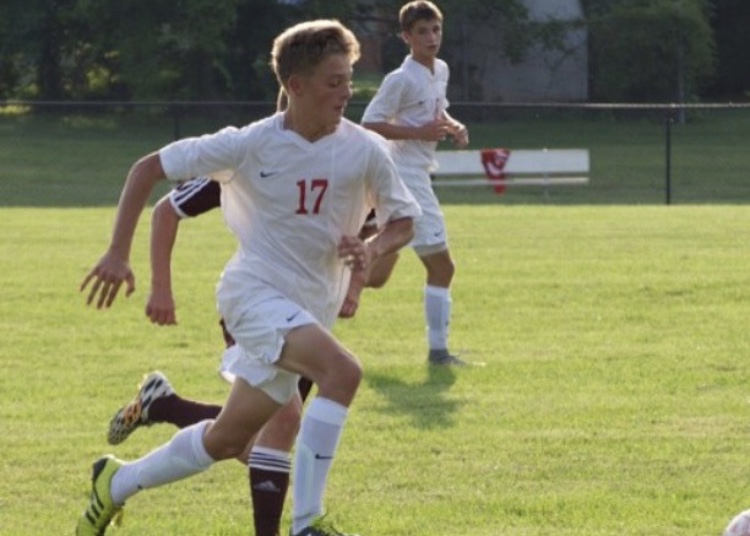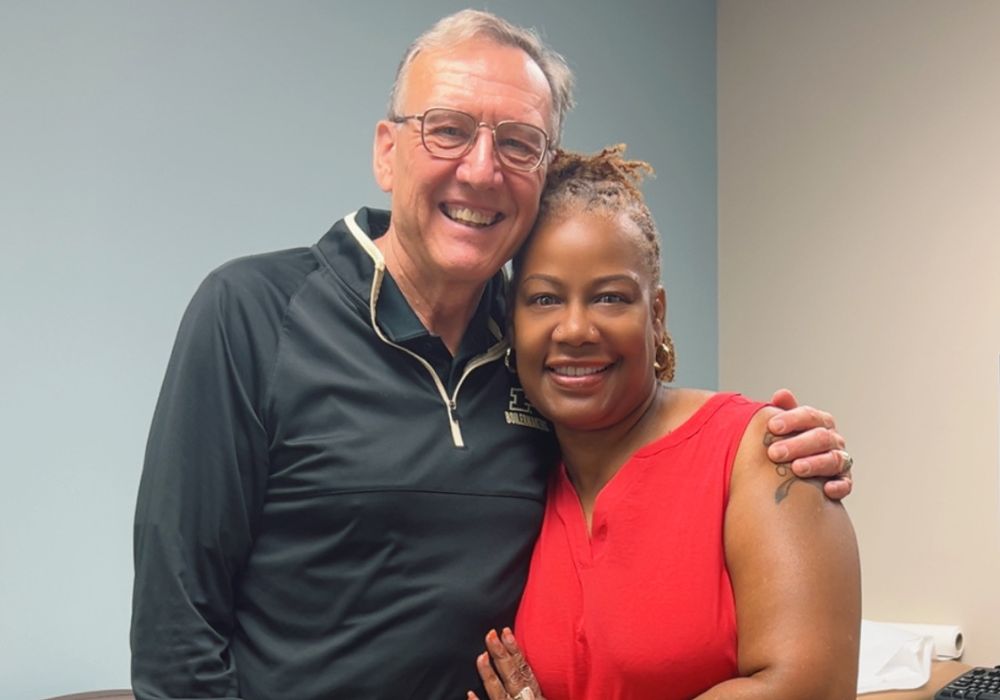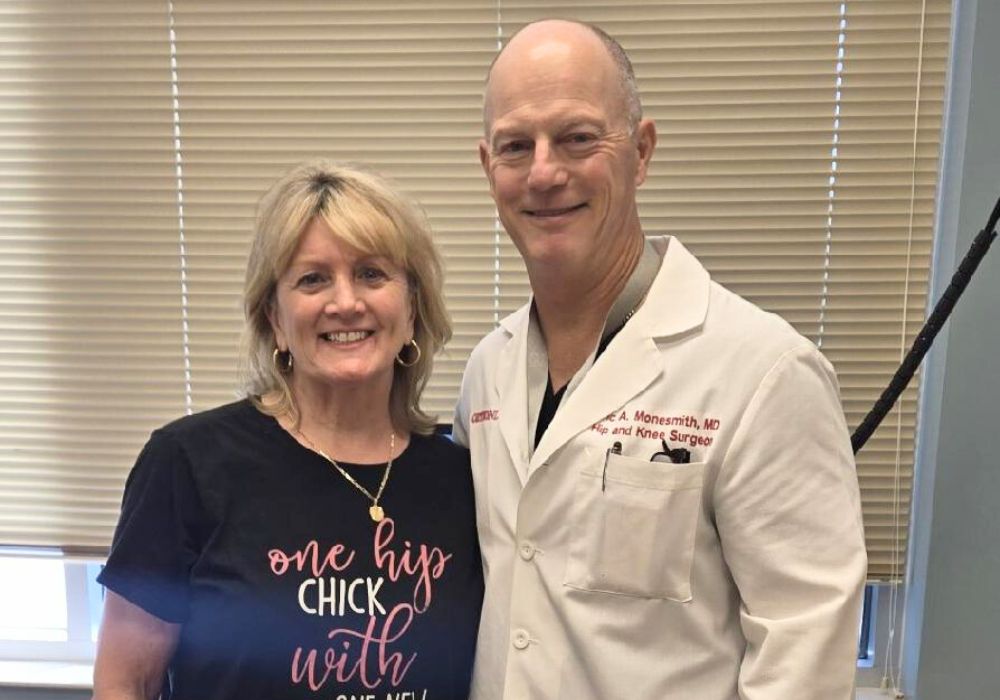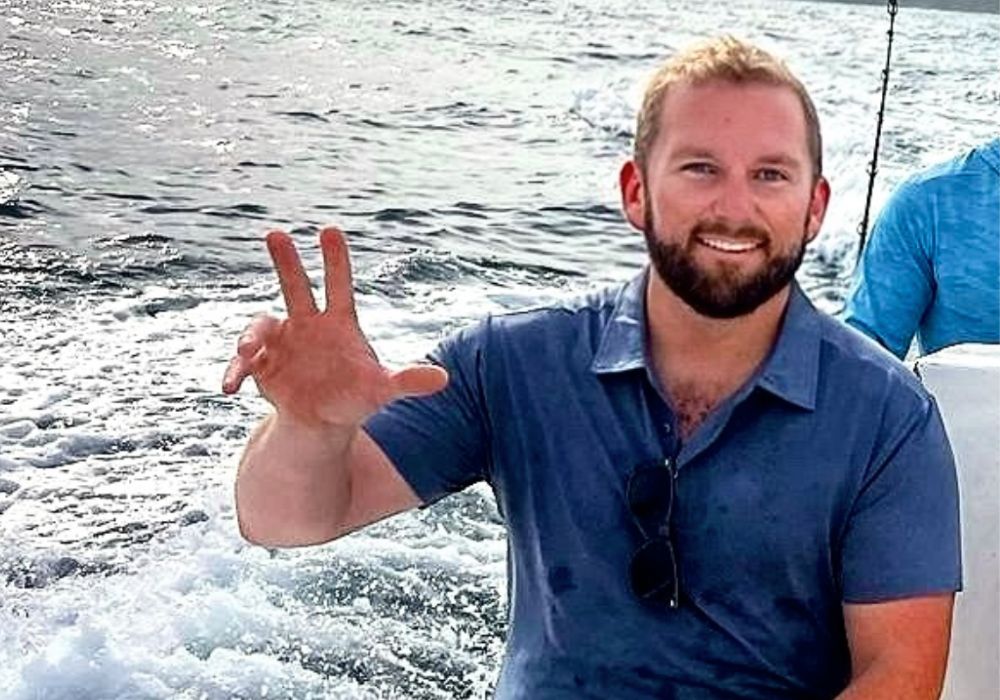THIS ARTICLE IS PART OF THE ULTIMATE GUIDE TO SPORTS MEDICINE
In October 2016 Cameron Dabbs, who was 15 years old, injured his knee during a travel soccer game. Cameron had unexpectedly taken a hit from an opponent and landed awkwardly on the outside of his knee.
“I heard a pop, but I managed to push through the pain and play another five minutes before having to step off due to the increasing discomfort,” said Cameron.
Cameron had torn his meniscus. However, he tried his best to continue participating in sports. Cameron even attempted to run track for his high school. But during the season he eventually had to quit due to debilitating pain.
“I had noticed my knee was popping during my track season and it started to become an issue,” said Cameron. “I was experiencing aching and shooting pain from the top of my right knee, down and across the outside.”
The pain also made sleeping difficult for Cameron and he started to become irritated in many aspects of his life.
In an effort to avoid surgery and maintain an active lifestyle, Cameron opted to try physical therapy. Treatment for a meniscus tear depends on the severity of your injury. If your tear is small and does not cause symptoms, surgery may not be necessary and other treatment options, such as physical therapy, can help relieve pain.
UNSURE IF YOU SHOULD SEEK PROFESSIONAL HELP? LEARN MORE
Nevertheless, that wasn’t the case for Cameron and the pain persisted.
“Cameron was in physical therapy but regardless of effort with the trainers and therapists, his knee appeared to get weaker,” said Lisa, Cameron’s mom.
Cameron’s mom added that Cameron “had started running track too but would come home wrapped in ice and every time he was told he could play sports again, the same issues would occur, lots of pain, swelling in his knee and he couldn’t put weight on it.”
That’s when Lisa spoke to a friend who recommended Cameron see OrthoIndy sports medicine specialist, Dr. Matthew Lavery.

Knee surgery
“I remember meeting Dr. Lavery for the first time, he was professional, straight to the point, and after looking at my MRI for about 30 seconds, he had a rough idea and plan in place on how to fix my issue,” said Cameron.
Dr. Lavery determined Cameron had made a reasonable attempt at non-operative treatment and that knee surgery may be needed if he wanted to continue participating in sports.
“If you have additional injuries or your symptoms persist with nonsurgical treatment, you may need surgery to treat your meniscus tear,” said Dr. Lavery. “Surgery for a torn meniscus can often be performed arthroscopically using small incisions. This less invasive technique will have less pain and is typically done as outpatient surgery.”
Cameron’s mother was relieved to hear Dr. Lavery’s plan.
“As a mother, my mind was put at ease. Dr. Lavery was to the point and direct. He suggested surgery to check the meniscus, have it repaired and to remove a cyst that had developed under Cameron’s IT band. He also said if he found anything else he would take care of it,” said Lisa.
Cameron’s surgery did end up being a bit more complex than they originally thought. However, Dr. Lavery made sure to take care of all the problems.
“Cameron’s meniscus tear turned out to be only a minor component contributing to his pain. A tendon, called the popliteus, that normally attaches to the outside of your knee kept dislocating, causing the popping in Cameron’s knee,” said Dr. Lavery.
“The diagnosis is somewhat difficult to make based upon imaging because the tendon looks normal when the patient is lying still for the MRI. Examining Cameron’s knee in a clinic and repeating his exam during surgery confirmed the dislocating tendon, which we were able to fix.”
Recovery after knee surgery
After surgery, your doctor may put your knee in a brace to keep it from moving. If you have had a meniscus repair procedure, you may need to use crutches for four to six weeks to keep weight off of your knee.
“The speed of recovery following an operation largely depends on the extent of the procedure. In general, we focus on restoring normal motion in the involved joint and then progressively move toward strengthening. The final phase of rehabilitation involves meeting the more strenuous demands that sports can place on the body,” said Dr. Lavery.
Cameron followed the recovery plan from Dr. Lavery and his physical therapists. After a lot of hard work and determination, it paid off. Five months after surgery Cameron was able to focus on soccer again.
“My experience with Dr. Lavery was the best experience I’ve had with a medical professional. I’m not saying this to make him look almighty, however, he allowed my surgery to be booked as soon as possible in order for me to heal faster and be back in time for my main sport, soccer,” said Cameron.
Cameron successfully finished his last season of summer travel soccer with Zionsville and is now playing soccer during his senior year of high school. Cameron also hopes to walk-on his soccer team during college.
“I would like to thank Dr. Lavery, and everyone else involved, for allowing me to continue my soccer career and carry on with daily activities. If it were not for the team I had at OrthoIndy, I would potentially still be in physical therapy to this day,” said Cameron.
To make an appointment with Dr. Lavery please call 317.884.5170 or learn more about sports medicine treatment at OrthoIndy.
Schedule an appointment
Your well-being is important to us. Click the button below or call us to schedule an appointment with one of our orthopedic specialists. If your injury or condition is recent, you can walk right into one of our OrthoIndy Urgent Care locations for immediate care. For rehabilitation and physical therapy, no referral is needed to see one of our physical therapists.





